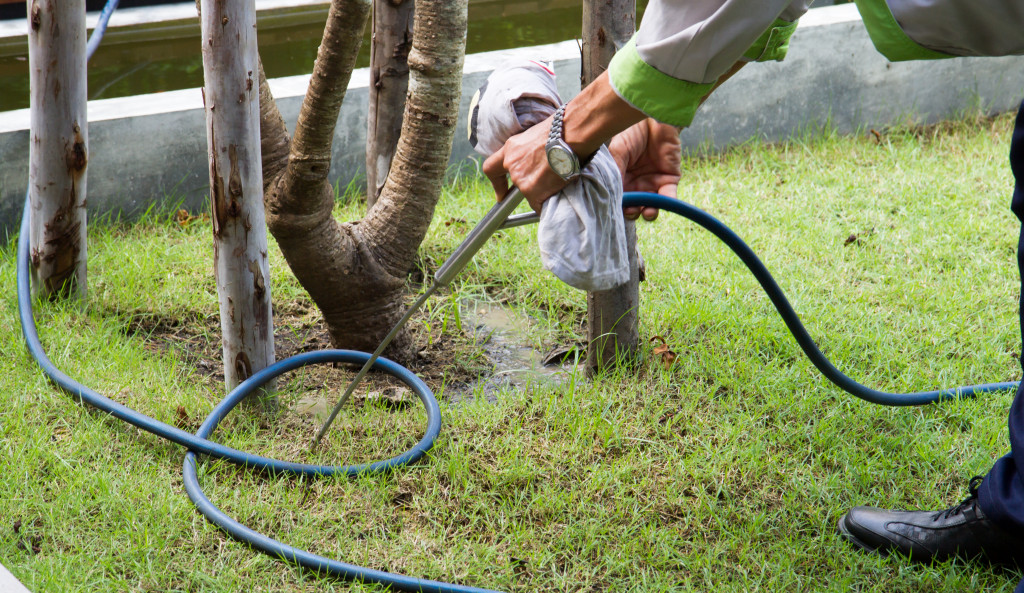People these days are making an effort to reduce environmental impact by living an eco-friendly lifestyle and consuming organic and non-GMO foods. Some even put up their own garden to avoid patronizing commercial products and ensure they’re only eating healthy.
Having a home garden is increasingly becoming a popular hobby. Homeowners are doing everything to make their garden look healthy by investing in gardening products and following the best gardening practices. But sometimes, even if we’re doing it right, pests will always find a way to ruin a healthy garden. This can be a costly problem that can cause the life of your entire greenery.
When managing a garden, it’s important to use a proactive and thoughtful approach to prevent pests from doing any damage. Others turn to pests and tick control services that use all-natural products and cost-effective solutions to save money while reducing environmental impact.
Integrated pest management, or IPM, offers a sustainable approach that combines corrective and preventive measures to prevent pests from causing damages while minimizing risks to humans and the environment. If you’re looking for an eco-friendly approach to reducing pest infestation, continue reading to know more about this sustainable pest control method.
What is integrated pest management?
Integrated pest management is a pest management system designed to be sustainable. It combines biological, chemical, and culture measures for specific circumstances, such as plant biotechnology. This offers an environmentally sound, cost-effective, and socially acceptable approach to tackling pests, weeds, diseases, and other harmful elements in agriculture.
The plant science sector has introduced various IPM methods for several years, which has publicly announced its dedication to promoting IPM. When it comes to pest prevention, IPM involves the careful consideration of all pest control methods and the integration of the right preventive practices that limit the growth of pest infestation.
The main goal of IPM is to keep pesticides and other pest interventions to economically justified levels and reduce risks to the environment and human health. It also emphasizes the development of healthy crops while ensuring the least disruptions to agricultural ecosystems and promotes all-natural pest control solutions.
IPM relies on a flexible approach that uses available techniques and technologies to handle pest issues safely and effectively. The basic principle of an effective IPM method is to establish pest control strategies that consider locally available practices, relevant prevention techniques, social needs, and the local environment.

The seven essential factors of an effective IPM program
IPM principles are a part of industry training programs for agribusiness owners, farmers, and other agricultural stakeholders worldwide. Throughout the years, IPM experts have produced a number of information and training documents to support various IPM programs.
Six essential factors contribute to a successful IPM program: prevention, identification, monitoring, record-keeping, action levels, tactics criteria, and evaluation.
Prevention is a primary factor in IPM programs. It requires preventative measures to its existing and new designs and structures. Since many pests look similar, pest identification is necessary to make sure pest managers identify insects and problem pests accurately. Next is monitoring, which involves routine trapping and site inspections to identify the type and level of pest infestation.
Record-keeping is also critical to establish patterns and trends in pest infestations. The recorded data from the treatment and inspection must include the population size, pest identification, distributions, suggestions for future prevention, and detailed data about the treatment approach.
Action level refers to the population size that requires action for economic, aesthetic, and human health reasons. When it comes to minimizing environmental impact, tactics criteria consider the approaches that least incur adverse effects on humans and other organisms. Lastly, evaluation plays an important role in measuring the overall success of the IPM strategies.
Benefits of IPM programs
In the past years, IPM programs have proven themselves an effective pest management program that significantly reduces risks related to pesticides while protecting the welfare, health, and quality of the environment.
By using an integrated approach, IPM programs promote healthy plants and sound structures to their pest prevention methods. This way, you ensure the process involves sustainable and bio-based pest management alternatives while eliminating its harmful effects on workers, tenants, non-target species, and public exposure. As a result, it reduces safety and health concerns about pesticide-related practices.
Adopting IPM strategies in pest prevention offers a range of benefits, from reducing pest damage, increased productivity, and sustained development. IPM offers various pest prevention approaches, making synthetic and harmful pesticides a thing of the past. By using an integrated IPM for your garden, you ensure pests will no longer show up while enjoying a healthy, harmonious garden.

